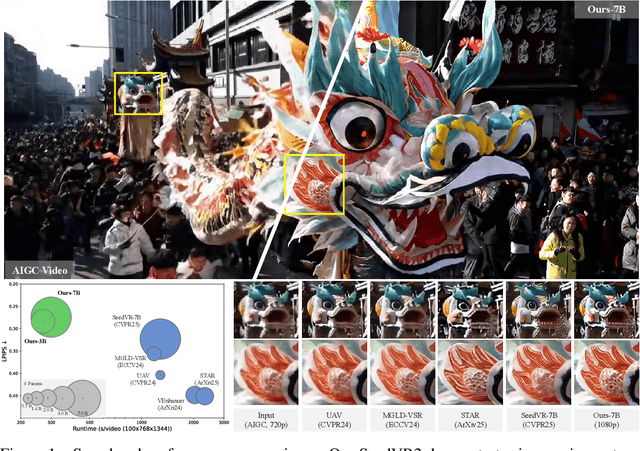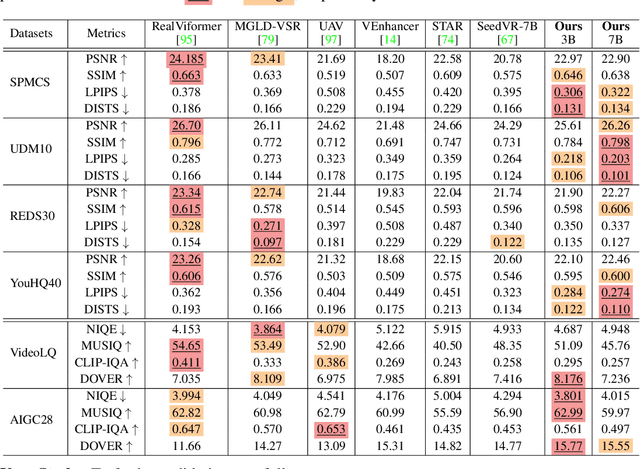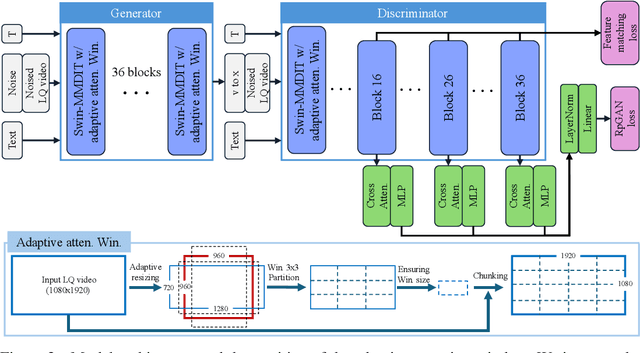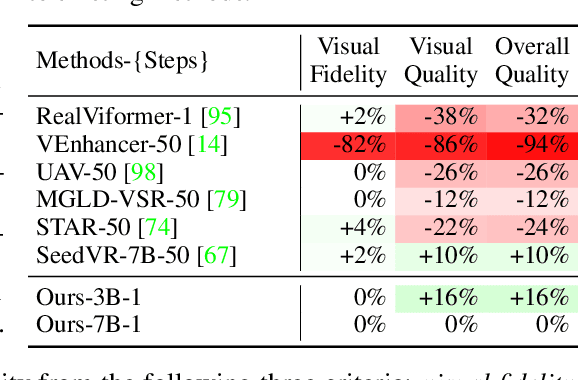Meng Wei
Comparative validation of surgical phase recognition, instrument keypoint estimation, and instrument instance segmentation in endoscopy: Results of the PhaKIR 2024 challenge
Jul 22, 2025Abstract:Reliable recognition and localization of surgical instruments in endoscopic video recordings are foundational for a wide range of applications in computer- and robot-assisted minimally invasive surgery (RAMIS), including surgical training, skill assessment, and autonomous assistance. However, robust performance under real-world conditions remains a significant challenge. Incorporating surgical context - such as the current procedural phase - has emerged as a promising strategy to improve robustness and interpretability. To address these challenges, we organized the Surgical Procedure Phase, Keypoint, and Instrument Recognition (PhaKIR) sub-challenge as part of the Endoscopic Vision (EndoVis) challenge at MICCAI 2024. We introduced a novel, multi-center dataset comprising thirteen full-length laparoscopic cholecystectomy videos collected from three distinct medical institutions, with unified annotations for three interrelated tasks: surgical phase recognition, instrument keypoint estimation, and instrument instance segmentation. Unlike existing datasets, ours enables joint investigation of instrument localization and procedural context within the same data while supporting the integration of temporal information across entire procedures. We report results and findings in accordance with the BIAS guidelines for biomedical image analysis challenges. The PhaKIR sub-challenge advances the field by providing a unique benchmark for developing temporally aware, context-driven methods in RAMIS and offers a high-quality resource to support future research in surgical scene understanding.
SeedVR2: One-Step Video Restoration via Diffusion Adversarial Post-Training
Jun 05, 2025



Abstract:Recent advances in diffusion-based video restoration (VR) demonstrate significant improvement in visual quality, yet yield a prohibitive computational cost during inference. While several distillation-based approaches have exhibited the potential of one-step image restoration, extending existing approaches to VR remains challenging and underexplored, particularly when dealing with high-resolution video in real-world settings. In this work, we propose a one-step diffusion-based VR model, termed as SeedVR2, which performs adversarial VR training against real data. To handle the challenging high-resolution VR within a single step, we introduce several enhancements to both model architecture and training procedures. Specifically, an adaptive window attention mechanism is proposed, where the window size is dynamically adjusted to fit the output resolutions, avoiding window inconsistency observed under high-resolution VR using window attention with a predefined window size. To stabilize and improve the adversarial post-training towards VR, we further verify the effectiveness of a series of losses, including a proposed feature matching loss without significantly sacrificing training efficiency. Extensive experiments show that SeedVR2 can achieve comparable or even better performance compared with existing VR approaches in a single step.
NavDP: Learning Sim-to-Real Navigation Diffusion Policy with Privileged Information Guidance
May 13, 2025Abstract:Learning navigation in dynamic open-world environments is an important yet challenging skill for robots. Most previous methods rely on precise localization and mapping or learn from expensive real-world demonstrations. In this paper, we propose the Navigation Diffusion Policy (NavDP), an end-to-end framework trained solely in simulation and can zero-shot transfer to different embodiments in diverse real-world environments. The key ingredient of NavDP's network is the combination of diffusion-based trajectory generation and a critic function for trajectory selection, which are conditioned on only local observation tokens encoded from a shared policy transformer. Given the privileged information of the global environment in simulation, we scale up the demonstrations of good quality to train the diffusion policy and formulate the critic value function targets with contrastive negative samples. Our demonstration generation approach achieves about 2,500 trajectories/GPU per day, 20$\times$ more efficient than real-world data collection, and results in a large-scale navigation dataset with 363.2km trajectories across 1244 scenes. Trained with this simulation dataset, NavDP achieves state-of-the-art performance and consistently outstanding generalization capability on quadruped, wheeled, and humanoid robots in diverse indoor and outdoor environments. In addition, we present a preliminary attempt at using Gaussian Splatting to make in-domain real-to-sim fine-tuning to further bridge the sim-to-real gap. Experiments show that adding such real-to-sim data can improve the success rate by 30\% without hurting its generalization capability.
Seaweed-7B: Cost-Effective Training of Video Generation Foundation Model
Apr 11, 2025Abstract:This technical report presents a cost-efficient strategy for training a video generation foundation model. We present a mid-sized research model with approximately 7 billion parameters (7B) called Seaweed-7B trained from scratch using 665,000 H100 GPU hours. Despite being trained with moderate computational resources, Seaweed-7B demonstrates highly competitive performance compared to contemporary video generation models of much larger size. Design choices are especially crucial in a resource-constrained setting. This technical report highlights the key design decisions that enhance the performance of the medium-sized diffusion model. Empirically, we make two observations: (1) Seaweed-7B achieves performance comparable to, or even surpasses, larger models trained on substantially greater GPU resources, and (2) our model, which exhibits strong generalization ability, can be effectively adapted across a wide range of downstream applications either by lightweight fine-tuning or continue training. See the project page at https://seaweed.video/
CameraCtrl II: Dynamic Scene Exploration via Camera-controlled Video Diffusion Models
Mar 13, 2025Abstract:This paper introduces CameraCtrl II, a framework that enables large-scale dynamic scene exploration through a camera-controlled video diffusion model. Previous camera-conditioned video generative models suffer from diminished video dynamics and limited range of viewpoints when generating videos with large camera movement. We take an approach that progressively expands the generation of dynamic scenes -- first enhancing dynamic content within individual video clip, then extending this capability to create seamless explorations across broad viewpoint ranges. Specifically, we construct a dataset featuring a large degree of dynamics with camera parameter annotations for training while designing a lightweight camera injection module and training scheme to preserve dynamics of the pretrained models. Building on these improved single-clip techniques, we enable extended scene exploration by allowing users to iteratively specify camera trajectories for generating coherent video sequences. Experiments across diverse scenarios demonstrate that CameraCtrl Ii enables camera-controlled dynamic scene synthesis with substantially wider spatial exploration than previous approaches.
SeedVR: Seeding Infinity in Diffusion Transformer Towards Generic Video Restoration
Jan 04, 2025



Abstract:Video restoration poses non-trivial challenges in maintaining fidelity while recovering temporally consistent details from unknown degradations in the wild. Despite recent advances in diffusion-based restoration, these methods often face limitations in generation capability and sampling efficiency. In this work, we present SeedVR, a diffusion transformer designed to handle real-world video restoration with arbitrary length and resolution. The core design of SeedVR lies in the shifted window attention that facilitates effective restoration on long video sequences. SeedVR further supports variable-sized windows near the boundary of both spatial and temporal dimensions, overcoming the resolution constraints of traditional window attention. Equipped with contemporary practices, including causal video autoencoder, mixed image and video training, and progressive training, SeedVR achieves highly-competitive performance on both synthetic and real-world benchmarks, as well as AI-generated videos. Extensive experiments demonstrate SeedVR's superiority over existing methods for generic video restoration.
Learning from Concealed Labels
Dec 03, 2024



Abstract:Annotating data for sensitive labels (e.g., disease, smoking) poses a potential threats to individual privacy in many real-world scenarios. To cope with this problem, we propose a novel setting to protect privacy of each instance, namely learning from concealed labels for multi-class classification. Concealed labels prevent sensitive labels from appearing in the label set during the label collection stage, which specifies none and some random sampled insensitive labels as concealed labels set to annotate sensitive data. In this paper, an unbiased estimator can be established from concealed data under mild assumptions, and the learned multi-class classifier can not only classify the instance from insensitive labels accurately but also recognize the instance from the sensitive labels. Moreover, we bound the estimation error and show that the multi-class classifier achieves the optimal parametric convergence rate. Experiments demonstrate the significance and effectiveness of the proposed method for concealed labels in synthetic and real-world datasets.
ESA: Example Sieve Approach for Multi-Positive and Unlabeled Learning
Dec 03, 2024



Abstract:Learning from Multi-Positive and Unlabeled (MPU) data has gradually attracted significant attention from practical applications. Unfortunately, the risk of MPU also suffer from the shift of minimum risk, particularly when the models are very flexible as shown in Fig.\ref{moti}. In this paper, to alleviate the shifting of minimum risk problem, we propose an Example Sieve Approach (ESA) to select examples for training a multi-class classifier. Specifically, we sieve out some examples by utilizing the Certain Loss (CL) value of each example in the training stage and analyze the consistency of the proposed risk estimator. Besides, we show that the estimation error of proposed ESA obtains the optimal parametric convergence rate. Extensive experiments on various real-world datasets show the proposed approach outperforms previous methods.
CoA: Chain-of-Action for Generative Semantic Labels
Nov 26, 2024



Abstract:Recent advances in vision-language models (VLM) have demonstrated remarkable capability in image classification. These VLMs leverage a predefined set of categories to construct text prompts for zero-shot reasoning. However, in more open-ended domains like autonomous driving, using a predefined set of labels becomes impractical, as the semantic label space is unknown and constantly evolving. Additionally, fixed embedding text prompts often tend to predict a single label (while in reality, multiple labels commonly exist per image). In this paper, we introduce CoA, an innovative Chain-of-Action (CoA) method that generates labels aligned with all contextually relevant features of an image. CoA is designed based on the observation that enriched and valuable contextual information improves generative performance during inference. Traditional vision-language models tend to output singular and redundant responses. Therefore, we employ a tailored CoA to alleviate this problem. We first break down the generative labeling task into detailed actions and construct an CoA leading to the final generative objective. Each action extracts and merges key information from the previous action and passes the enriched information as context to the next action, ultimately improving the VLM in generating comprehensive and accurate semantic labels. We assess the effectiveness of CoA through comprehensive evaluations on widely-used benchmark datasets and the results demonstrate significant improvements across key performance metrics.
Normal-GS: 3D Gaussian Splatting with Normal-Involved Rendering
Oct 27, 2024



Abstract:Rendering and reconstruction are long-standing topics in computer vision and graphics. Achieving both high rendering quality and accurate geometry is a challenge. Recent advancements in 3D Gaussian Splatting (3DGS) have enabled high-fidelity novel view synthesis at real-time speeds. However, the noisy and discrete nature of 3D Gaussian primitives hinders accurate surface estimation. Previous attempts to regularize 3D Gaussian normals often degrade rendering quality due to the fundamental disconnect between normal vectors and the rendering pipeline in 3DGS-based methods. Therefore, we introduce Normal-GS, a novel approach that integrates normal vectors into the 3DGS rendering pipeline. The core idea is to model the interaction between normals and incident lighting using the physically-based rendering equation. Our approach re-parameterizes surface colors as the product of normals and a designed Integrated Directional Illumination Vector (IDIV). To optimize memory usage and simplify optimization, we employ an anchor-based 3DGS to implicitly encode locally-shared IDIVs. Additionally, Normal-GS leverages optimized normals and Integrated Directional Encoding (IDE) to accurately model specular effects, enhancing both rendering quality and surface normal precision. Extensive experiments demonstrate that Normal-GS achieves near state-of-the-art visual quality while obtaining accurate surface normals and preserving real-time rendering performance.
 Add to Chrome
Add to Chrome Add to Firefox
Add to Firefox Add to Edge
Add to Edge